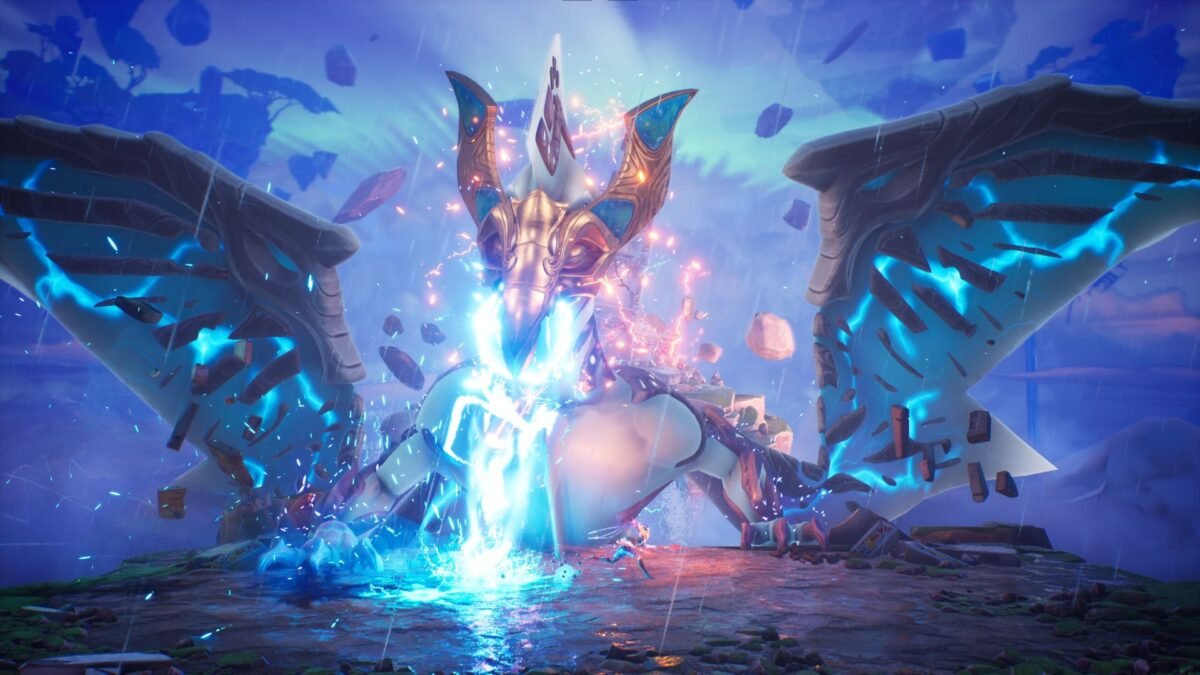Have you ever thought what you would say to a lost loved one if you just had a few more moments with them? I’d imagine the answer would be somewhere around yes and definitely. Death and regret go hand in hand, and that emotional duality is what Tales of Kenzera: ZAU seeks to deliver to the player. Tales of Kenzera: ZAU is a tale seeping with African culture that also brings the player face to face with some of the hardest emotions associated with loss while doubling as a fun Metroidvania title inspired by its predecessors. One thing is certain, though: this title is unique.
Tales of Kenzera: ZAU starts by introducing the player to the world of the Nganga. You’re thrust into the pages of a Bantu Tale left behind by your late father, and after your mother’s words “take your time” echo through the first room you enter, you fall into the world of Kenzera as Zau. Zau is a Nganga; the Nganga are spiritual healers tasked with shepherding spirits to peace. As Zau, you have also recently lost your dear Baba, and after making a deal with the literal God of Death Kalunga, you are tasked with facing three mighty spirits in return for the return of your Baba.

Tales of Kenzera: ZAU makes one thing clear: this title takes a virtuoso approach to the intense emotions associated with the five stages of death. As you explore the beautiful landscape of Kenzera and confront its three distinct biomes—Highlands, Woodlands, and Deadlands—the background tells more of the story. Colour is used in a way that foreshadows what will happen next, and things that seem out of place in the background may highlight an upcoming event that will be a direct gut punch of emotion. This is Surgent Studio’s lead artist, Ackeem Durrant, showing off his storytelling talents. The use of the background in this way is awe-inspiring.
Founder of Surgent Studios and voice actor of Zau, Abubakar Salim, used his Father’s death as a catalyst for the story in Tales of Kenzera: ZAU, and the emotions one feels when experiencing such loss is portrayed with a deft hand during Zau’s journey. As someone who has also recently experienced a catastrophic death in the family, the themes present in Zau are designed to give the player peace with loss, just like the protagonist, just like the writer.
“Tales of Kenzera: ZAU makes one thing readily apparent, this title locks horns with the intense emotions associated with the five stages of death with a virtuosic hand.”
The way the story is told can only be done from Salim’s perspective with the complex layers of emotion present, and he drives the vehicle as a storyteller born to chauffeur the player to acceptance. This emotional labyrinth is navigated with precision, and Salim demands the player feel the duality between their own loss and Tales of Kenzera: ZAU.
This duality expressed in the background and environments is also portrayed by Zau’s weaponry. Tales of Kenzera: ZAU gives the player access to shaman masks (not unlike Crash Bandicoot’s Aku Aku, without the pickup noise) that equip him with the powers of the sun or the moon. The moon allows the player to throw sharp icy projectiles at opponents, and the sun gives Zau two flame swords to beat down enemies with.

Swapping masks is easier done than said with a press of L1, and slapping down combos on enemies can go on for a LONG time if you juggle them just right. Fans of Prince of Persia: The Lost Crown will feel right at home, as Tales of Kenzera: ZAU deploys a combat system that could be described as ‘Devil May Cry but 2.5D’. Combat is fluid and fun, with a variety of enemies that come with culturally accurate names and they come at you in mixtures that greatly accompany each other. In the later stages of ZAU, the waves of enemies will truly test your prowess as a Nganga.
The landscape of Kenzera is filled with puzzles, secrets, and platforming challenges typical of the Metroidvania genre. During gameplay, you’ll encounter inaccessible areas, but thankfully, Kalunga offers helpful whispers, such as “You can’t go there yet, look around first.” I greatly appreciate this feature. In many Metroidvania games, mechanics require players to retrace their steps with newfound powers to obtain significant power-ups and access previously inaccessible areas, and Tales of Kenzera: ZAU follows this pattern. However, Kalunga’s guidance has saved me from aimless exploration and trial-and-error approaches, instead setting me on the right path numerous times.
“The soundtrack may be the best part of Tales of Kenzera: ZAU.”
Zau can kick off walls, air dash (similar to Celeste, with one dash allowed before landing on flat ground), and double jump to navigate through Kenzera. Movement and traversal feel silky smooth, and overcoming challenges is incredibly satisfying. As Zau learns new powers, such as the ability to freeze water, these abilities are also cleverly utilized for traversal. Tales of Kenzera: ZAU effectively leverages its atmosphere to enhance puzzle-solving, and at one point, I froze a waterfall, used wall kicks to scale it, and then fell back down to air dash through the current to uncover a hidden secret. Secrets are abundant in Kenzera, and discovering them feels truly rewarding.
Tying everything together is the best soundtrack I’ve heard in gaming since Darren Korb’s composition on Super Giant’s Hades. Multi-award-winning composer and lead on ZAU, Nainita Desai pulls out all the stops to inject true African culture into the music of Tales of Kenzera: ZAU. Desai, whose parents were brought up in the culture portrayed in ZAU, outsourced famous musicians from South and West Africa to add to the enchanting soundtrack.

Desai stated that her mission was to drive this coming-of-age story with an ancestral musical composition that has been passed down for generations. To achieve this, Desai incorporated traditional African instruments, such as the Fulani Flute and the Djembe, and collaborated with master musicians from the continent to enhance the score. Dembele Sidiki, a renowned Djembe player from West Africa, can be heard accompanying Zau as they navigate through Kenzera. During a particularly challenging section of platforming, the percussion resonated intensely, as if urging me to progress further. The soundtrack may indeed be the standout feature of Tales of Kenzera: ZAU.
Tales of Kenzera: ZAU is a triumphant debutante title from a new studio. It bleeds culture and raw emotion, while also delivering a narrative steeped in Bantu mythology. The duality between Salim and Zau’s story is instantly felt, and if someone has experienced a loss recently, Salim does a solid job of shepherding the players themselves to acceptance without trying.
While there are some hangups, like fast travel points feeling miles apart or a lot of empty space on the map, these issues don’t detract from the art of Zau. While Tales of Kenzera: ZAU is ‘just’ a video game, as Salim says, “as we embark on this odyssey together, we come to understand that the journey is much deeper than that.” I wholeheartedly agree.






